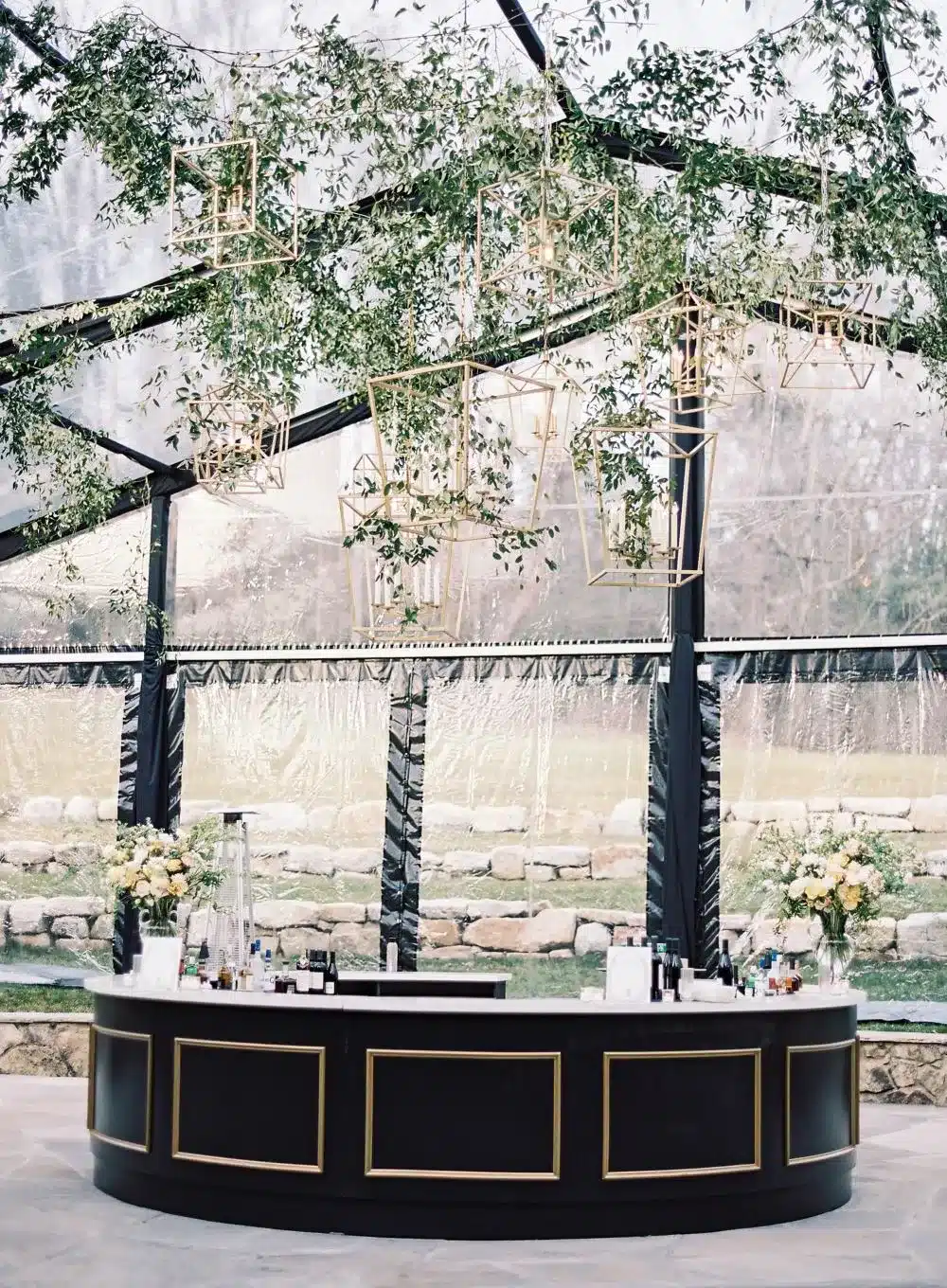Unexpected weather doesn’t have to disrupt a perfectly planned outdoor celebration. With the right waterproof tent accessories, your event space can remain elegant, secure, and comfortable regardless of the forecast. From protective sidewalls and engineered flooring to climate control, anchoring, and discreet rain management systems, each element works together to create a seamless, weatherproof environment. This guide explores how to integrate these accessories into your tent design, ensuring that every detail, from guest comfort to décor preservation, is safeguarded with both style and reliability.
Key Takeaways
- Waterproof sidewalls are essential for blocking rain and adding privacy.
- Engineered flooring prevents mud and ensures stable footing for guests.
- Climate control systems maintain comfort and protect against humidity.
- Anchoring systems provide stability against strong winds and shifting ground.
- Rain management accessories, like gutters and drainage channels, prevent flooding.
- A fully integrated plan ensures resilience, comfort, and elegance in any weather.
What Are the Premier Waterproof Tent Sidewalls for Reliable Rain Protection?
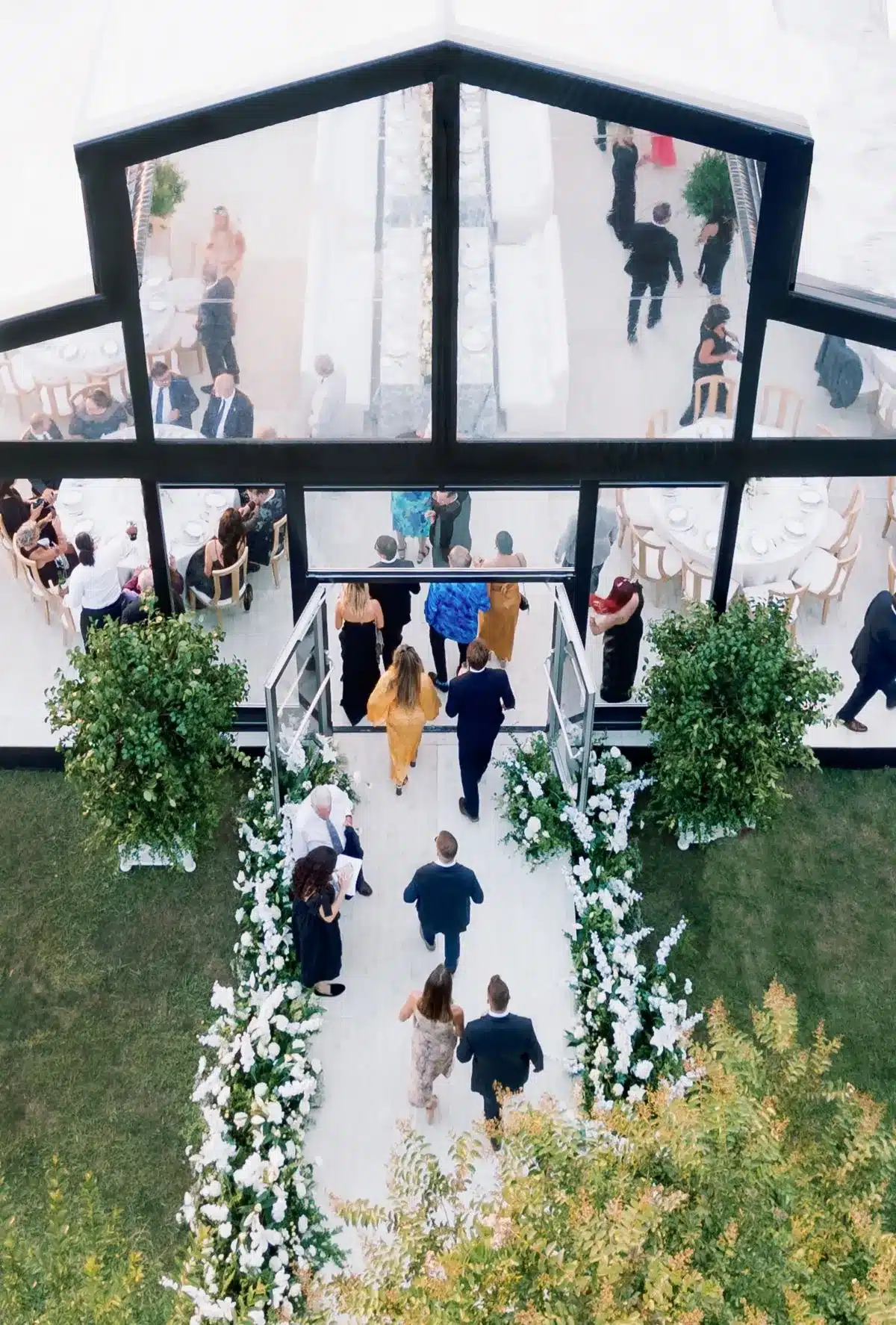
Waterproof sidewalls are the first layer of defense in creating a secure and comfortable tented environment. Available as rigid panels or flexible curtains, they seal the perimeter to block wind-driven rain, retain interior warmth, and protect event décor. Properly installed with clip systems or keder tracks, they form a continuous barrier while offering the option of clear visibility or complete privacy. The most effective sidewalls combine durability, insulation, and elegance to safeguard both guest comfort and the event’s overall aesthetic.
How Do Sidewalls Deflect Rain and Enhance Privacy?
High-quality waterproof sidewalls feature overlapping seams and storm flaps that channel rainwater downward, preventing splatter or seepage even during heavy storms. These reinforced closures double as windbreaks while maintaining a dry, secure interior. In addition to weather protection, tightly sealed sidewalls create exclusive event zones—shielding activities from external distractions and drafts, while also elevating the sense of intimacy and refinement inside the tent.
What Materials Are Best for Waterproof Sidewalls?
Three common material options offer distinct benefits:
Choosing Between Clear, Solid, and Insulated Sidewalls
- Clear Vinyl Sidewalls maximize natural light and views, perfect for vineyard weddings or events with picturesque surroundings.
- Solid PVC Sidewalls provide complete privacy, ideal for intimate receptions, trade events, or branded experiences.
- Insulated Sidewalls maintain stable interior temperatures, making them the right choice for winter galas or desert climates.
Selecting the right sidewall option depends on your venue exposure, desired ambiance, and climate considerations, ensuring a seamless blend with climate control and overall event design.
Best Practices for Installing and Maintaining Sidewalls
- Align clips or keder edges precisely with tent rails to eliminate gaps.
- Tension panels evenly to prevent sagging and water pooling.
- Clean surfaces regularly with pH-neutral solutions and apply UV-protective sprays.
- Inspect seams and flaps before each event, resealing any minor wear with polyurethane-based sealant.
Consistent care not only extends the lifespan of sidewalls but also guarantees they integrate seamlessly with flooring, anchoring, and climate control systems for a polished, weatherproof setup.
Which Event Tent Flooring Solutions Excel in Waterproofing and Mud Prevention?
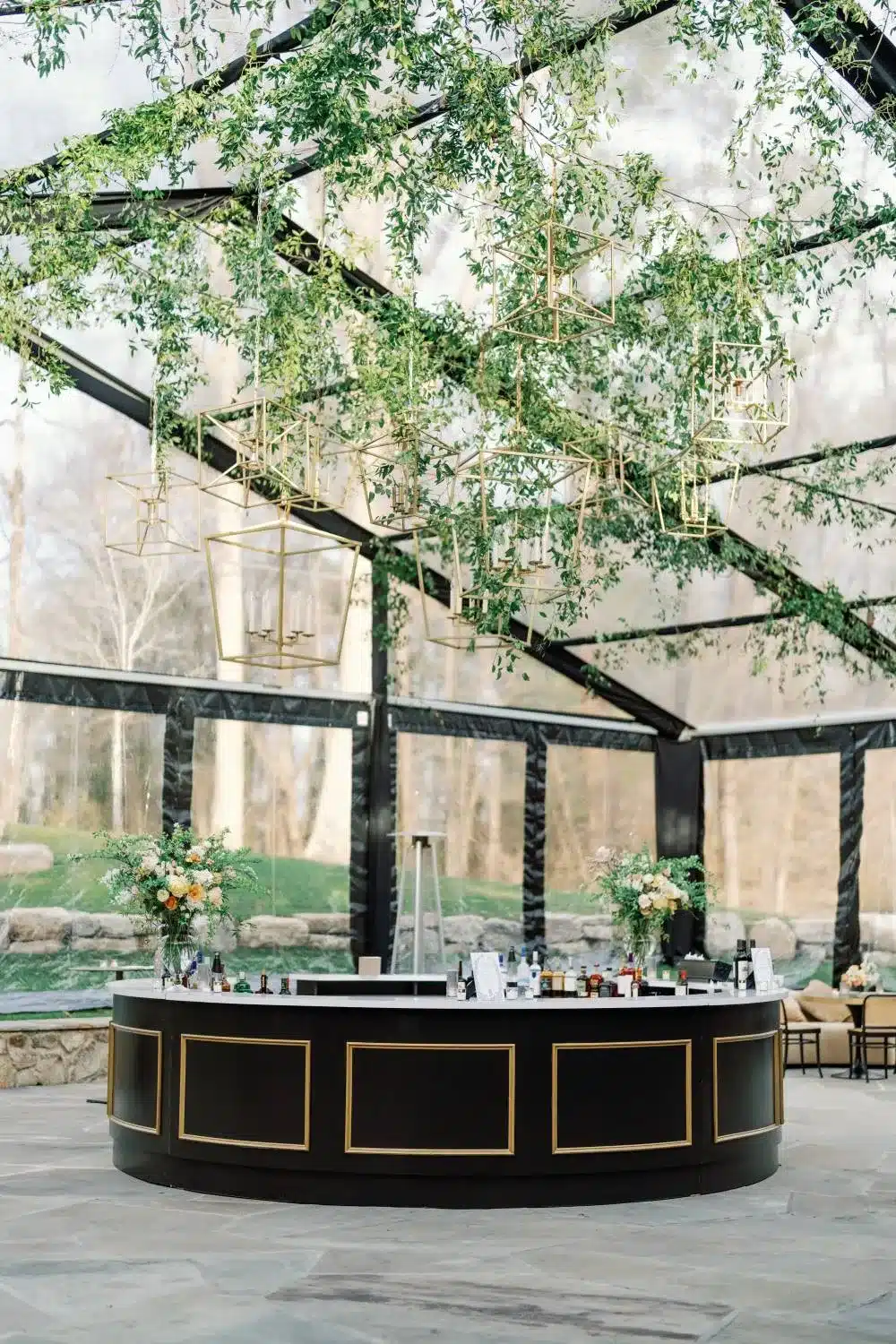
Transforming uneven or damp ground into a polished, stable surface is essential for luxury outdoor events. Premium waterproof flooring not only prevents mud and moisture from disrupting the celebration but also enhances the visual elegance of the space. Options such as interlocking tiles, raised platforms, and seamless vinyl create durable, refined foundations that protect both your décor and your guests’ comfort.
What Are the Leading Types of Waterproof Flooring?
- Interlocking Tiles – Lightweight, reusable tiles that snap together quickly, creating clean, durable event floors ideal for receptions and walkways.
- Raised Platforms – Built with timber or aluminum frames, these elevate the floor above wet ground, finished with boards, carpet, or hardwood for an upscale look.
- Seamless Vinyl Flooring – Waterproof sheets that create a smooth, cost-effective barrier, excellent for achieving a clean, unified appearance.
How Does Waterproof Flooring Prevent Mud and Ensure Stability?
High-quality flooring systems act as moisture barriers, protecting shoes, linens, and décor from damp ground. By distributing weight evenly, tiles and platforms maintain stability for dining setups, lounge areas, and dance floors. This ensures guests enjoy a smooth, secure surface throughout the event—even when weather conditions are less than ideal.
What Features Should You Prioritize in Waterproof Event Flooring?
How Do You Install and Maintain Waterproof Flooring?
- Prepare the Ground – Compact and level the site, using gravel or drainage fabric if needed.
- Plan the Layout – Align flooring panels with tent supports and entryways for seamless coverage.
- Secure the System – Anchor edges or platform legs to ensure stability in all conditions.
- Maintain Cleanliness – Sweep regularly, wash with mild solutions, and replace worn panels when needed.
A well-installed flooring system not only ensures guest safety and comfort but also complements sidewalls, anchoring, and climate control for a fully weatherproof, elegant environment.
How Can Weatherproof Tent Heating and Cooling Systems Guarantee Guest Comfort?
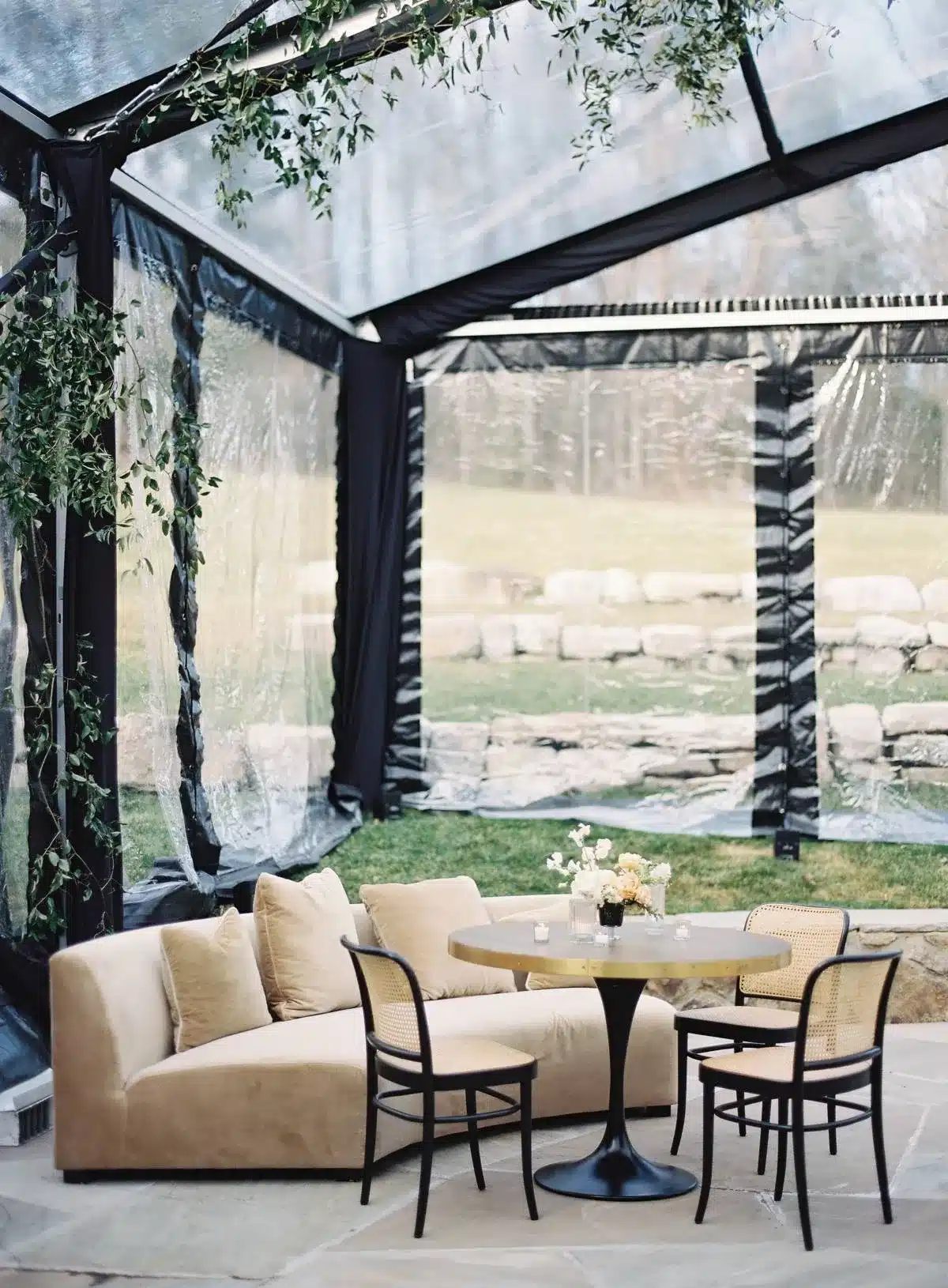
Maintaining a stable, comfortable climate inside your tent is essential for any outdoor event. Advanced heating and cooling systems are designed to perform reliably in all weather conditions, protecting guests from temperature swings and preventing humidity-related issues that could affect décor and equipment. Whether you’re hosting a cozy winter gala or a summer celebration, these systems ensure your tent remains inviting throughout the event.
What Are the Leading Options for Tent Climate Control?
- Portable Heaters – Propane or electric heaters provide efficient warmth, designed for safe outdoor use with sealed controls. Ideal for cooler months or evening receptions.
- Industrial Fans – High-capacity fans with water-resistant motors circulate air, reduce condensation, and keep interiors fresh during warm or humid conditions.
- Integrated HVAC Units – Full-scale heating and cooling systems connect seamlessly with tent structures, offering precise, reliable temperature control for large or long-duration events.
How Do Heating and Cooling Systems Integrate with Tent Structures?
Modern climate equipment connects directly to tents through ducted openings and sealed fittings that prevent water ingress. Sidewalls help retain conditioned air, while raised flooring adds insulation, creating a complete, energy-efficient envelope. Together, these elements ensure consistent comfort while preserving the polished atmosphere of the event.
What Safety and Efficiency Features Should You Prioritize?
- Automatic Shut-Off Sensors – Instantly power down heaters if they tip or overheat.
- UL-Rated Cables and GFCI Outlets – Safeguard against electrical faults in damp conditions.
- Variable Speed Controls – Allow fine-tuned temperature management, reducing energy use.
- Energy Recovery Ventilators (ERVs) – Pre-condition incoming air to lighten the system load and improve efficiency.
With the right combination of equipment, safety measures, and energy-efficient features, weatherproof climate control transforms any tented space into a secure, luxurious environment where guests remain comfortable from start to finish.
Why Are Heavy-Duty Tent Anchoring Systems Crucial for Weather-Resistant Event Tents?
Anchoring is the unseen foundation of any safe and weather-ready tented event. A properly engineered system prevents dangerous wind uplift, ground shifting, and erosion, ensuring structural stability and guest safety—even in challenging weather. By combining advanced anchoring methods with careful site assessment, you can create a secure environment where luxury details remain the focus, not the elements.
What Are the Essential Components of a Heavy-Duty Anchoring System?
- Galvanized Steel Stakes – Driven deep into firm soil, these provide maximum pull-out resistance and long-term stability.
- Water or Concrete Ballasts – Ideal for hard surfaces where stakes cannot be used, offering reliable counterweight.
- Heavy-Duty Ratchet Straps – Keep tent legs securely fastened to anchoring points, maintaining correct structural alignment.
- Wind Bracing Kits – Diagonal cables and adjustable turnbuckles counter lateral forces, reinforcing overall strength.
How Do Anchoring Systems Ensure Stability Against Wind?
Each component works in harmony to form a continuous, force-resisting network. Stakes and ballasts prevent uplift, straps lock the framework into position, and wind bracing strengthens the structure against side pressure. This layered defense ensures the tent remains stable, safe, and aligned throughout the event.
What Are Best Practices for Choosing Anchoring Systems by Ground Type?
- Soft Soil – Longer stakes or auger-style anchors paired with reinforced straps maximize hold.
- Gravel or Sand – Heavy ballasts, such as concrete blocks or water tanks, keep tents secure on shifting ground.
- Concrete or Asphalt – Low-profile ballast plates, screws, and cable bracing provide discreet yet powerful stability.
Selecting the right anchoring method for your site creates a rock-solid foundation, allowing enhancements like sidewalls, flooring, and climate control to function seamlessly. With professional installation, anchoring not only ensures safety but also preserves the polished, elegant atmosphere of your event.
How Do Tent Fabric Waterproofing and Maintenance Extend Tent Longevity?
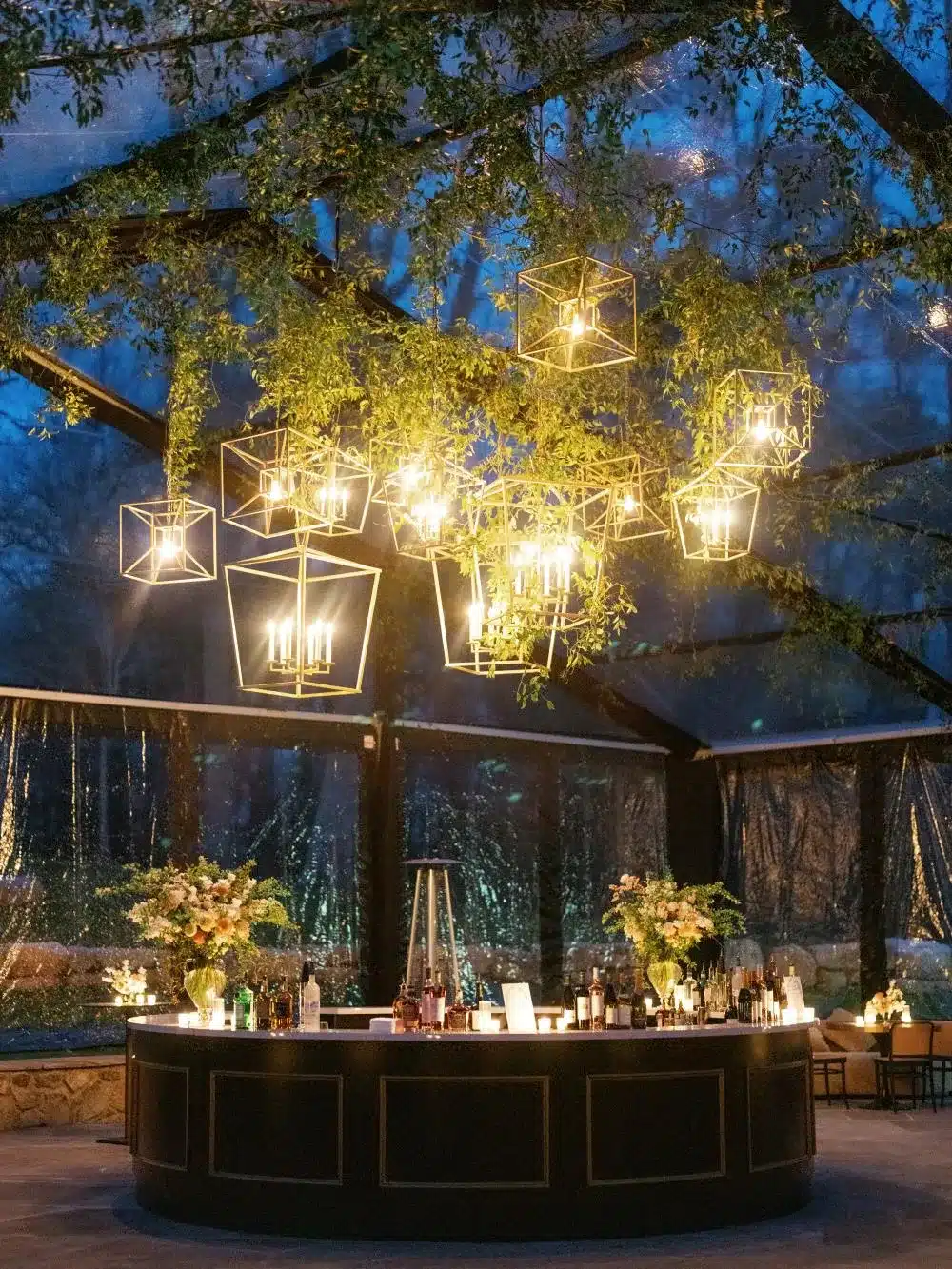
Protecting tent fabrics from water saturation, UV damage, and mold growth requires both advanced treatments and consistent care. Regular use of professional-grade sealants and repellents formulated for PVC-coated polyester, vinyl, and sailcloth helps maintain the fabric’s strength and flexibility. With proper maintenance, tents not only remain fully weatherproof but also retain the polished, elegant appearance expected at luxury events.
What Are the Leading Waterproof Tent Fabrics?
- PVC-Coated Polyester – Flexible, durable, and inherently flame-retardant, this textile offers excellent waterproofing and tensile strength.
- Vinyl – Known for seamless waterproof performance and long-lasting durability, though heavier to handle.
- Sailcloth – A woven polyester prized for its translucent elegance, allowing natural light to filter through while remaining fully waterproof.
Each fabric provides distinct advantages, allowing planners to select the option best suited to their event’s design and functional requirements.
How Do Sealants and Repellent Sprays Enhance Fabric Performance?
- Polyurethane-Based Sealants – Form strong, flexible bonds at stitch points and seams to block water penetration.
- Silicone or Fluoropolymer Sprays – Create hydrophobic coatings that repel rain and prevent mildew growth, extending fabric life.
Applied regularly, these treatments ensure consistent weather protection and preserve the tent’s refined finish.
What Maintenance Practices Protect Against Mold and Fabric Wear?
- Thorough Drying – Always dry tents completely before storage to prevent moisture pockets that foster mold and mildew.
- Gentle Cleaning – Use pH-neutral detergents and soft brushes to remove dirt without damaging coatings.
- Annual Inspections – Reapply waterproof treatments and check for UV degradation or seam wear.
- Proper Storage – Store upright in cool, dry conditions to prevent creasing and material fatigue.
These practices safeguard your investment and guarantee that tent fabrics continue to perform flawlessly, event after event.
How Do Rain Management Systems Protect Event Tents?
Rain management systems are essential for preventing water pooling and protecting flooring, décor, and guest comfort. Custom-fitted gutters, storm flaps, and carefully planned drainage channels work together to divert rainwater safely away from tent perimeters.
How Do Gutters and Storm Flaps Prevent Water Intrusion?
- Integrated Gutters – Seamlessly capture roof runoff and direct it away from tent legs using downspouts or hoses.
- Storm Flaps – Overlap sidewalls and roof edges to block wind-driven rain and reinforce waterproof seals.
Together, they create an efficient diversion network that maintains dry, secure interiors regardless of weather.
What Placement Strategies Improve Drainage and Flood Prevention?
- Elevated Positioning – Place tents on natural slopes or raised platforms to stay above water flow.
- Perimeter Trenches – Shallow channels around tent edges intercept and redirect runoff.
- Gravel Swales – Installed downstream, they promote water infiltration and prevent mud accumulation.
When combined with engineered flooring, these strategies ensure a stable, weather-resistant foundation for any outdoor celebration.
How Can Event Planners Seamlessly Integrate Waterproof Accessories for Guaranteed Event Success?
A truly effective waterproofing strategy goes beyond individual components. When sidewalls, flooring, climate control, and anchoring systems are integrated as a single, cohesive plan, they create a fully weather-resistant environment. Each element supports the others, ensuring the tented space remains secure, comfortable, and elegant—regardless of changing weather conditions.
What Are the Key Benefits of Combining Sidewalls, Flooring, Climate Control, and Anchoring Systems?
- Continuous Weather Envelope – Seamless connections between sidewalls and flooring eliminate points of water entry and keep interiors dry.
- Optimized Thermal Efficiency – Insulated materials and sealed flooring reduce heat loss or gain, making climate control more effective.
- Enhanced Structural Safety – Anchoring systems stabilize the entire tent, protecting climate control units and flooring from wind or shifting ground.
- Streamlined Setup – Coordinated installation avoids conflicts between systems and ensures efficient, timely execution.
This integrated approach guarantees that every component performs at its best, resulting in a secure and polished setting for any event.
How Does Contingency Planning Strengthen Event Resilience?
Even with advanced waterproofing systems, preparing for the unexpected adds peace of mind. Smart strategies include:
- Pre-positioning backup generators and portable heaters.
- Keeping spare sidewall panels and flooring modules on hand.
- Assigning rapid-response teams for on-site adjustments.
- Mapping alternative drainage routes in case of heavy rain.
With these measures in place, event organizers can confidently adapt to sudden weather shifts without compromising guest experience.
Where Can You Find Expert Guidance on Waterproof Tent Accessories?
Luxury events demand precision and expertise. Working with experienced specialists ensures that every waterproofing detail—whether sidewalls, flooring, or climate systems—is properly specified, installed, and maintained. Their tailored recommendations create an event space that is not only resilient but also visually stunning, allowing planners to focus fully on the guest experience.
Conclusion
Unpredictable weather should never stand in the way of an extraordinary outdoor event. By combining waterproof sidewalls, engineered flooring, climate control systems, anchoring solutions, and advanced rain management, planners can create seamless environments that protect both guests and décor. When these elements are integrated into a single, cohesive plan, the result is a tented space that is resilient, comfortable, and effortlessly elegant. With the right accessories and expert guidance, your event remains unforgettable—no matter the forecast.
Frequently Asked Questions
What is the most effective way to keep rain out of an event tent?
Waterproof sidewalls with overlapping seams and storm flaps provide the best protection against wind-driven rain, creating a complete barrier while maintaining guest comfort.
Which flooring option is best for muddy or uneven ground?
Raised platforms are ideal for soft or wet terrain, while interlocking tiles or roll vinyl are excellent for firm, level surfaces. Each creates a stable, dry foundation for guests and décor.
Can climate control systems work effectively in wet conditions?
Yes. Outdoor-rated heaters, fans, and HVAC units with waterproof connections integrate seamlessly with tents to maintain ideal temperatures and reduce condensation.
How do anchoring systems keep tents safe in storms?
Anchors, ballasts, ratchet straps, and wind bracing work together to resist uplift, shifting, and lateral forces, ensuring the tent remains secure in high winds.
How can rainwater be managed around a tented space?
Integrated gutters, storm flaps, and carefully planned drainage channels divert water away from tent perimeters, preventing pooling or flooding inside the structure.

